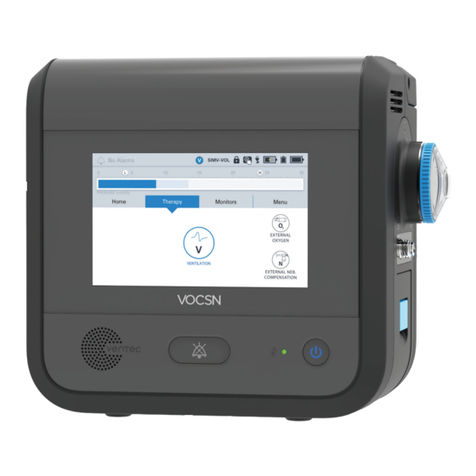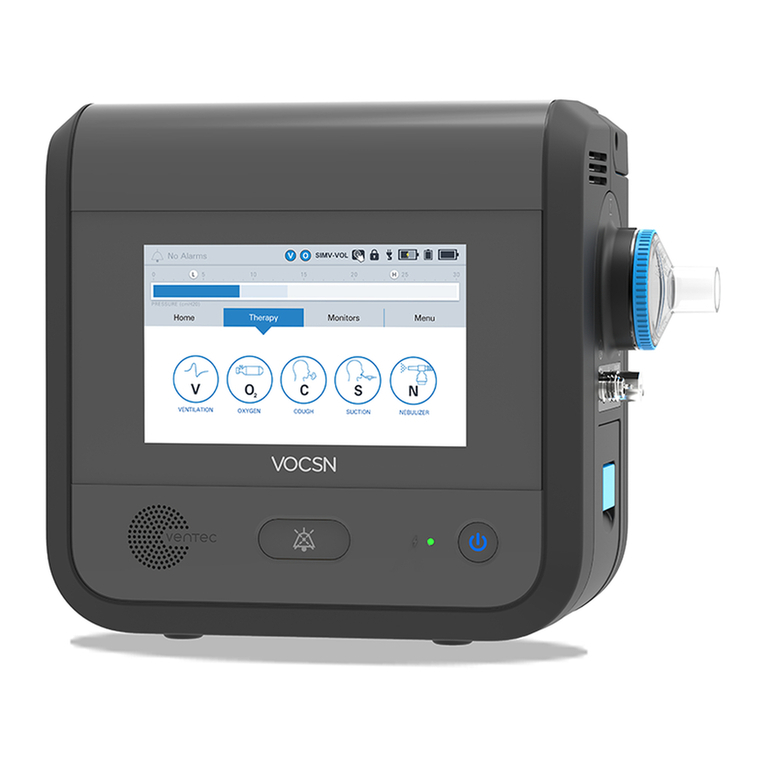
Table of Contents
VentecLife.com 4
Connecting a Passive Ventec One-Circuit with HME 25
Connecting a Humidier and Heated Wire Ventec One-Circuit 26
Connecting Ventec One-Circuit Components 27
Connecting an HME (Heat-Moisture Exchanger) 27
Connecting an External Nebulizer Cup to the Patient Circuit 28
Setting up Ventilation Therapy with a Speaking Valve 29
Mouthpiece Patient Circuit Setup 30
Oxygen Therapy Setup 31
Setting Up External Oxygen Sources 31
Connecting External Low-Pressure Oxygen 32
Connecting a Nurse Call System or Remote Alarm 33
Running the Pre-Use Test 34
Connecting a React DataLink™ 35
Breath Types and Therapy Modes 36
Breath Types 36
Pressure Breaths 37
Volume Breaths 38
Spontaneous Breaths 38
V*Home Ventilation Modes 39
Bi-Level Mode 39
Assist/Control-Pressure with a Passive, or Valveless Ventec One-Circuit 40
Assist/Control-Pressure with a Mouthpiece Patient Circuit 40
SIMV-Pressure Mode 41
CPAP Function 41
High Flow Therapy 41
Assist/Control-Volume Mode 42
Assist/Control-Volume with a Passive, or Valveless Ventec One-Circuit 42
Assist/Control-Volume with a Mouthpiece Patient Circuit 42
SIMV-Volume Mode 43
Volume Targeted Ventilation Overview 44
Vol. Targeted-PS Mode 45
Vol. Targeted-PS with a Passive, or Valveless Ventec One-Circuit 45
Vol. Targeted-PS with a Mouthpiece Patient Circuit 45
Vol. Targeted-PC Mode 46
Vol. Targeted-PC with a Passive or Valveless Ventec One-Circuit 46
Assist/Control-Pressure with a Mouthpiece Patient Circuit 46
Vol. Targeted-SIMV Mode 47
Comparable Volume Ventilation Modes 48
Comparable Pressure Ventilation Modes (Including Volume-Targeted Ventilation) 49
Comparable Non-Invasive Ventilation Modes 50
The Touchscreen 51
































